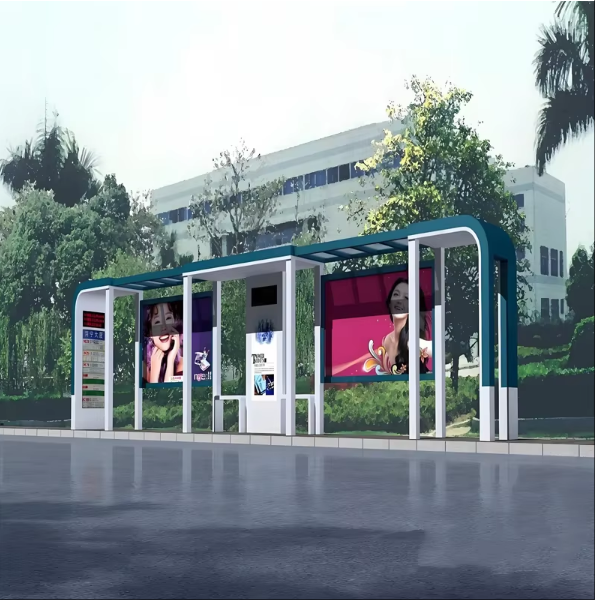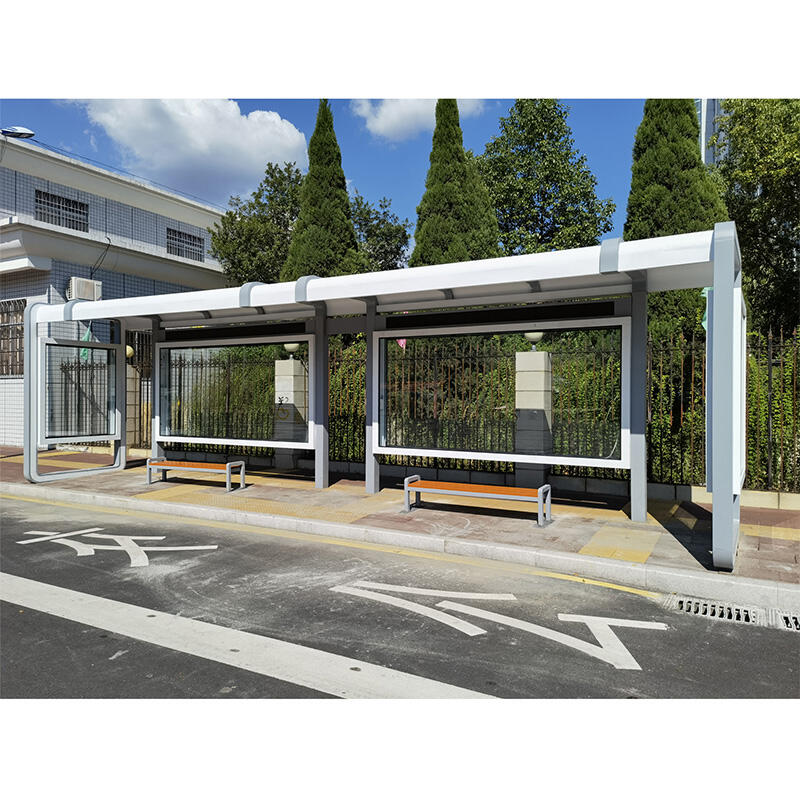होर्डिंग कैसे सहायता कर सकती है परिवर्तन व्यवसायों को
बाहरी विज्ञापन, विशेष रूप से होर्डिंग, ग्राहक व्यवहार को आकार देने में महत्वपूर्ण भूमिका निभाता है और स्थानीय व्यवसायों के लिए पैदल यात्रियों को बढ़ावा दे सकता है। लगभग 50% ग्राहक एक आकर्षक विज्ञापन देखने के बाद दुकान जाने की संभावना होती है, जो उनकी क्षमता को साबित करती है कि वे भौतिक स्थानों पर संभावित ग्राहकों को आकर्षित करने में मदद करती है। रणनीतिक रूप से होर्डिंग को स्थापित करके, व्यवसाय दर्शकों को प्रभावित करने और उन्हें आगंतुकों में बदलने में सफलता प्राप्त कर सकते हैं, जो ग्राहक प्राप्ति और व्यवसाय के विकास का समर्थन करता है।
होर्डिंग उच्च दृश्यता सुनिश्चित करने में अधिकारी हैं, जिससे वे अंतिम छाप छोड़ने के लिए शक्तिशाली उपकरण बन जाती हैं। वे हजारों यात्रियों और पैदल यात्रियों को प्रतिदिन देखी जा सकती है, जो ब्रांड की पहचान बढ़ाती है और स्थानीय ब्रांड मौजूदगी को मजबूत करती है। जब उचित ढंग से डिज़ाइन की जाती हैं, तो होर्डिंग सार्वजनिक क्षेत्र में बाहर निकलती हैं, नए और पुराने ग्राहकों को अपनी दैनिक यात्रा में शामिल करते हुए उनकी रुचि जगाती हैं।
इसके अलावा, होर्डिंग पत्रिकाएँ स्थानीय दर्शकों को लक्ष्य बनाने के लिए पूरी तरह से उपयुक्त होती हैं, जिससे व्यवसायों को अपने समुदाय के साथ सीधे जुड़ने में सक्षम होते हैं। यह न केवल ग्राहकों की वफादारी को मजबूत करता है, बल्कि समुदाय के समर्थन का भाव भी बढ़ाता है। विशिष्ट भौगोलिक क्षेत्रों में विज्ञापनों को स्थापित करके, व्यवसाय अपने प्रासंगिकता को स्थानीय दर्शकों के लिए मजबूत कर सकते हैं, जिससे उनकी पेशकशों और निवासियों की आवश्यकताओं के बीच एक प्राकृतिक समायोजन बन जाता है। इस प्रकार, यह भौगोलिक लक्ष्यन ब्रांड की उपस्थिति और महत्व को स्थानीय संदर्भ में बढ़ाता है।
एक विपणन रणनीति में होर्डिंग पत्रिकाओं को शामिल करना व्यवसायों के लिए अपने स्थानीय समुदायों का महत्वपूर्ण हिस्सा बनने का एक प्रभावी तरीका है, जबकि यह एक ही समय में बिक्री और जुड़ाव को बढ़ाता है।
स्थानीय व्यवसायों के लिए होर्डिंग पत्रिका विज्ञापन के फायदे
उच्च दृश्यता और प्रसार
बिलबोर्ड विज्ञापनों को उच्च-ट्रैफिक क्षेत्रों में रणनीतिक स्थानों पर रखने के कारण अपने-आपके बराबर दृश्यता और प्रसार प्रदान करते हैं। ये स्थान राजमार्गों और व्यस्त चौराहों जैसे होते हैं, जहाँ हर दिन असंख्य ड्राइवर्स और पैदल यात्री गुज़रते हैं। यह सुनिश्चित करता है कि स्थानीय व्यवसायों को उच्च स्तर का प्रसार मिलता है, जिससे उनकी ब्रांड जागरूकता में महत्वपूर्ण वृद्धि होती है। शोध के अनुसार, लगभग 71% लोग बिलबोर्ड पर देखे गए विज्ञापनों को याद रखते हैं, जो समय के साथ ब्रांड की पहचान और जागरूकता में बनाए रखने के लिए इस माध्यम की प्रभावशीलता को दर्शाता है।
लागत-कुशल बाजारबाजी
होर्डिंग विज्ञापन स्थानीय व्यवसायों के लिए लागत-कुशल मार्केटिंग समाधान प्रदान करता है, विशेष रूप से उन छोटे उद्यमों के लिए जिनके पास सीमित विज्ञापन बजट है। डिजिटल या प्रिंट मीडिया की तुलना में, होर्डिंग आमतौर पर बेहतर कीमत की संरचना प्रदान करते हैं, जिससे व्यवसायों को प्रति प्रभाव की कम लागत पर व्यापक दर्शकों तक पहुँच सकते हैं। स्थानीय जनसांख्यिकी की स्पष्ट समझ के साथ, व्यवसाय अपने विज्ञापन बजट को उन होर्डिंग स्थानों पर प्रभावी रूप से वितरित कर सकते हैं जो उच्च निवेश पर अधिक लाभ देते हैं। यह रणनीतिक दृष्टिकोण प्रत्येक विज्ञापन डॉलर के खर्च को अधिकतम करता है।
24/7 मार्केटिंग उपस्थिति
बिलबोर्ड विज्ञापन के सबसे बड़े फायदों में से एक है इसकी 24/7 मार्केटिंग उपस्थिति। टीवी या रेडियो विज्ञापनों के विपरीत, जो विशेष समय पर चलते हैं, बिलबोर्ड दिन के किसी भी समय ब्रांड को संभावित ग्राहकों के सामने रखते हैं। यह निरंतर प्रतिबिंब ब्रांड की पहचान को मजबूत करने में मदद करता है और यह सुनिश्चित करता है कि कोई व्यवसाय ग्राहकों की दैनिक अनुभूतियों में निरंतर शामिल रहता है। यह निरंतर दृश्यता बढ़ी हुई पैदल यात्रा को प्रोत्साहित करती है क्योंकि यह ब्रांड को उन ग्राहकों के दिमाग में सबसे ऊपर रखती है जब वे संबंधित उत्पादों या सेवाओं की खरीदारी के बारे में सोचते हैं।
इन फायदों पर केंद्रित होकर, स्थानीय व्यवसाय बिलबोर्ड विज्ञापन का उपयोग करके अपनी पहुंच को बढ़ा सकते हैं, ग्राहकों के मन में अपनी याद को बनाए रख सकते हैं और लक्षित दर्शकों के साथ प्रभावी रूप से संलग्न हो सकते हैं।
प्रभावी बिलबोर्ड विज्ञापन के लिए रणनीतियाँ
सही स्थान का चयन
एक बिलबोर्ड एड के लिए आदर्श स्थान का चयन इसकी सफलता के लिए महत्वपूर्ण है। अपने लक्षित ग्राहकों के साथ मेल खाने वाले उच्च-ट्रैफिक क्षेत्रों पर ध्यान केंद्रित करके आप दृश्यता और प्रभाव को अधिकतम कर सकते हैं। शॉपिंग क्षेत्र, व्यस्त चौराहे या सार्वजनिक सुविधाओं के पास के क्षेत्र उत्कृष्ट प्रadar्शन के अवसर प्रदान करते हैं। बाजार शोध करना इन स्थानों को पहचानने में अमूल्य है, क्योंकि यह ग्राहक व्यवहार और ट्रैफिक पैटर्न के बारे में जानकारी देता है, जिससे आपका बिलबोर्ड अधिकतम प्रभावशीलता के लिए रणनीतिगत रूप से स्थापित होता है।
प्रभावशील एड्स डिज़ाइन करना
एक ध्यान-आकर्षक होसबोर्ड बनाने में स्पष्ट और संक्षिप्त संदेश का प्रसारण आकर्षक चित्रों के साथ किया जाता है। डिज़ाइन पर्याप्त रूप से प्रभावशाली होना चाहिए ताकि यात्रियों की क्षणिक ध्यान को पकड़ सके। पाठ्य को दूर से पढ़ने के लिए अच्छी तरह से पढ़ने वाले रंगों का उपयोग करें और पाठ को न्यूनतम रखें। 'एडवर्टाइजिंग साइन्स' जैसे संबंधित शब्दों का उपयोग करना विज्ञापन के संदर्भ को बढ़ा सकता है। इसके अलावा, एक मजबूत कॉल टू एक्शन शामिल करना संभावित ग्राहकों से तुरंत कार्रवाई के लिए प्रेरित कर सकता है, जो विज्ञापन की प्रभावशीलता को महत्वपूर्ण रूप से बढ़ाता है।
डिजिटल मार्केटिंग के साथ जुड़ना
डिजिटल मार्केटिंग रणनीतियों के साथ बिलबोर्ड विज्ञापन का संयोजन अभियान की पहुंच को काफी बढ़ा सकता है। सोशल मीडिया अभियानों जैसे तत्वों को बिलबोर्ड प्रयासों के साथ एकीकृत करने से उपभोक्ताओं की एक निर्बाध सगाई यात्रा सुनिश्चित होती है। उदाहरण के लिए, बिलबोर्ड पर QR कोड ऑनलाइन सामग्री के लिए एक पुल के रूप में कार्य कर सकते हैं, डिजिटल प्लेटफार्मों के लिए ऑफ़लाइन ट्रैफ़िक को ड्राइव कर सकते हैं। इन डिजिटल इंटरैक्शन के मेट्रिक्स की निगरानी करके, व्यवसाय बेहतर परिणामों के लिए अपनी बिलबोर्ड रणनीतियों को परिष्कृत कर सकते हैं। इस प्रकार, भौतिक और डिजिटल दोनों क्षेत्रों को शामिल करते हुए एक अच्छी तरह से गोल विपणन दृष्टिकोण प्राप्त किया जाता है।
वास्तविक दुनिया की सफलता की कहानियाँ
केस स्टडी: एक स्थानीय रेस्तरां का विकास
एक स्थानीय रेस्तरां बिलबोर्ड विज्ञापन की शक्ति का प्रभावपूर्वक उपयोग करके अपने नए मेनू आइटम्स की प्रचार किया, जिससे पहले महीने में 30% फुटफैल की चढ़ाई हुई। व्यस्त राजमार्गों के पास बिलबोर्ड को रखकर रेस्तरां ने अधिकतम दृश्यता सुनिश्चित की, जिससे विभिन्न प्रकार के ग्राहक आकर्षित हुए। यह रणनीतिक स्थान न केवल स्थानीय यात्रियों को लक्षित किया बल्कि भोजन विकल्पों की तलाश में यात्रियों को भी आकर्षित किया। इस अभियान की सफलता यह बताती है कि उच्च-ट्रैफिक स्थानों का चयन लक्षित डेमोग्राफिक्स के साथ मेल खाने वाले कितना महत्वपूर्ण है, जो बिलबोर्ड प्रचार के कुल प्रभाव को बढ़ाता है।
एक खुदरा दुकान ने बिक्री में वृद्धि कैसे की
एक राष्ट्रीय खुदरा शृंखला ने एक सफल होarding कैम्पेन चलाया, जिसने तीन महीनों में इसकी बिक्री में 20% तक की वृद्धि की। इस कैम्पेन की सफलता प्रभावी विज्ञापन में समय और स्थान की महत्वपूर्ण भूमिका को उजागर करती है। शीर्ष मौसम के दौरान रणनीतिक रूप से होardings को स्थापित करके, खुदरावाला उन खरीदारों का ध्यान आकर्षित करने में सफल रहा जब वे अधिकांशतः खरीदारी करने के लिए तैयार थे। होardings न केवल व्यापक दर्शकों तक पहुँचे, बल्कि महत्वपूर्ण खरीदारी की अवधि के दौरान उद्देश्य-निर्धारित उपभोक्ताओं को भी लक्षित किए, जिससे समय-बद्ध और सही स्थान पर स्थित होarding विज्ञापनों के बिक्री में महत्वपूर्ण वृद्धि करने की क्षमता का प्रदर्शन हुआ।
भविष्य के रुझान बिलबोर्ड विज्ञापन में
डिजिटल होardings का उदय
डिजिटल होर्डिंग आउटडॉर एडवर्टाइजिंग के परिदृश्य को नया रूप दे रहे हैं, वास्तविक समय में अपडेट की जा सकने वाली डायनेमिक कंटेंट क्षमता प्रदान करते हुए, जो गेज़ बढ़ाने में मदद करती है। ये आधुनिक एडवर्टाइजिंग साइन्स ब्रांडों को वर्तमान घटनाओं या उपभोक्ता पसंदगी के अनुसार अपने संदेशों को तेजी से समायोजित करने की अनुमति देते हैं। इसके अलावा, टेक्नोलॉजी को होर्डिंग में जोड़ने से एडवर्टाइजर्स को डेटा-आधारित रणनीतियों का उपयोग करके विशिष्ट जनसमूहों को लक्षित करने के लिए क्षमता मिलती है। यह सटीक लक्षित करना अभियानों के प्रभाव को बढ़ाता है, यह सुनिश्चित करता है कि सही संदेश सही लोगों तक सही समय पर पहुंचता है।
इंटरैक्टिव और पर्यावरण-अनुकूल नवाचार
बिलबोर्ड विज्ञापन के भविष्य को मनोरंजक प्रवृत्तियों से भी चिह्नित किया गया है, जो इंटरएक्टिवता और दूरदर्शीता में है। ऑगमेंटेड रियलिटी जैसी प्रौद्योगिकियों का उपयोग करने वाले इंटरएक्टिव बिलबोर्ड बढ़ती दर से लोगों को आकर्षित कर रहे हैं, विशेष और यादगार तरीकों से उपभोक्ताओं को जुड़ा करते हैं। ये बिलबोर्ड दर्शकों को सीधे इंटरैक्ट करने के लिए प्रोत्साहित करते हैं, ब्रांडों के साथ अर्थपूर्ण संबंध बनाते हैं। इसके अलावा, सौर ऊर्जा चालित बिलबोर्ड जैसी पर्यावरण-अनुकूल चालकता, पर्यावरण सचेत उपभोक्ताओं को आकर्षित करती है जो दूरदर्शीता पर प्राथमिकता देते हैं। पारंपरिक ऊर्जा स्रोतों पर निर्भरता को कम करके, ये हरे विज्ञापन समाधान बाजार में विशेष रहते हैं और बढ़ती मांग को पूरा करते हैं, जो दूरदर्शी पब्लिक सुविधाओं और अभ्यासों के लिए है।









